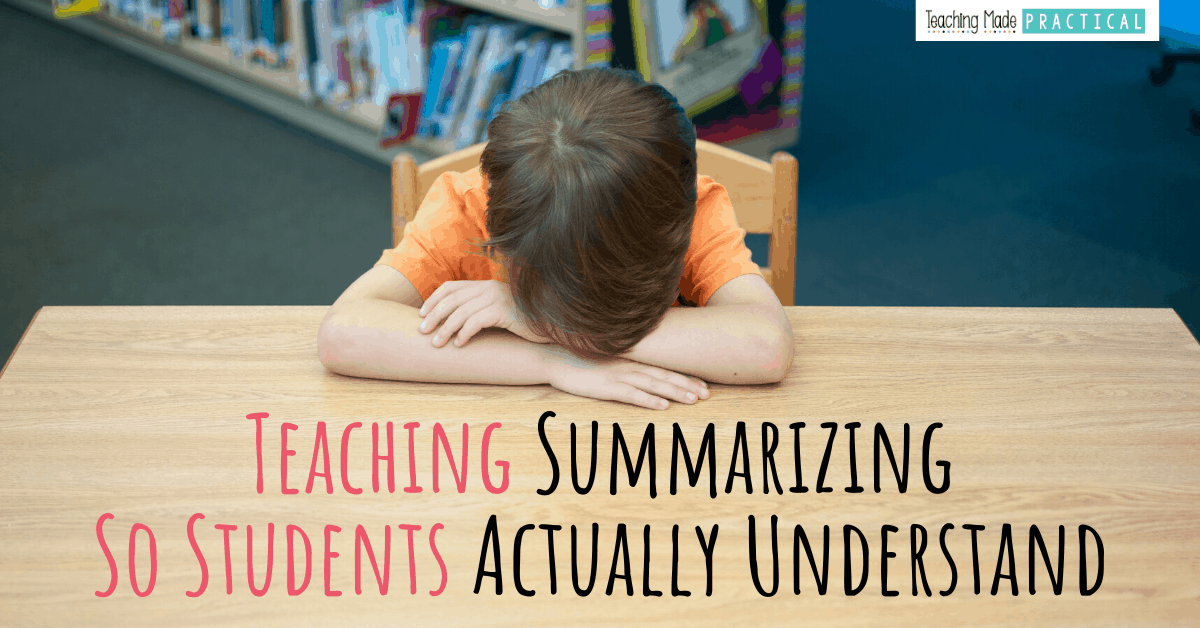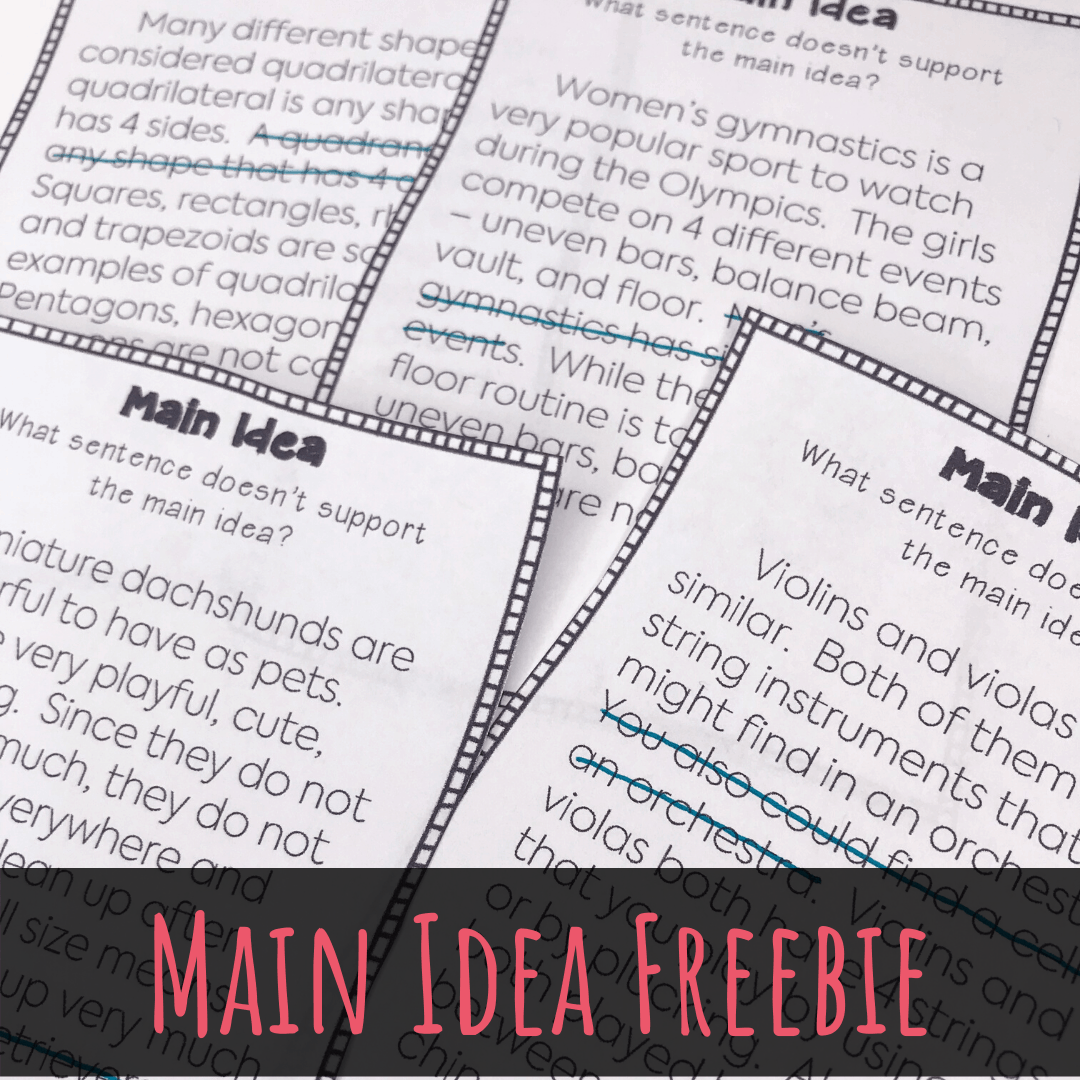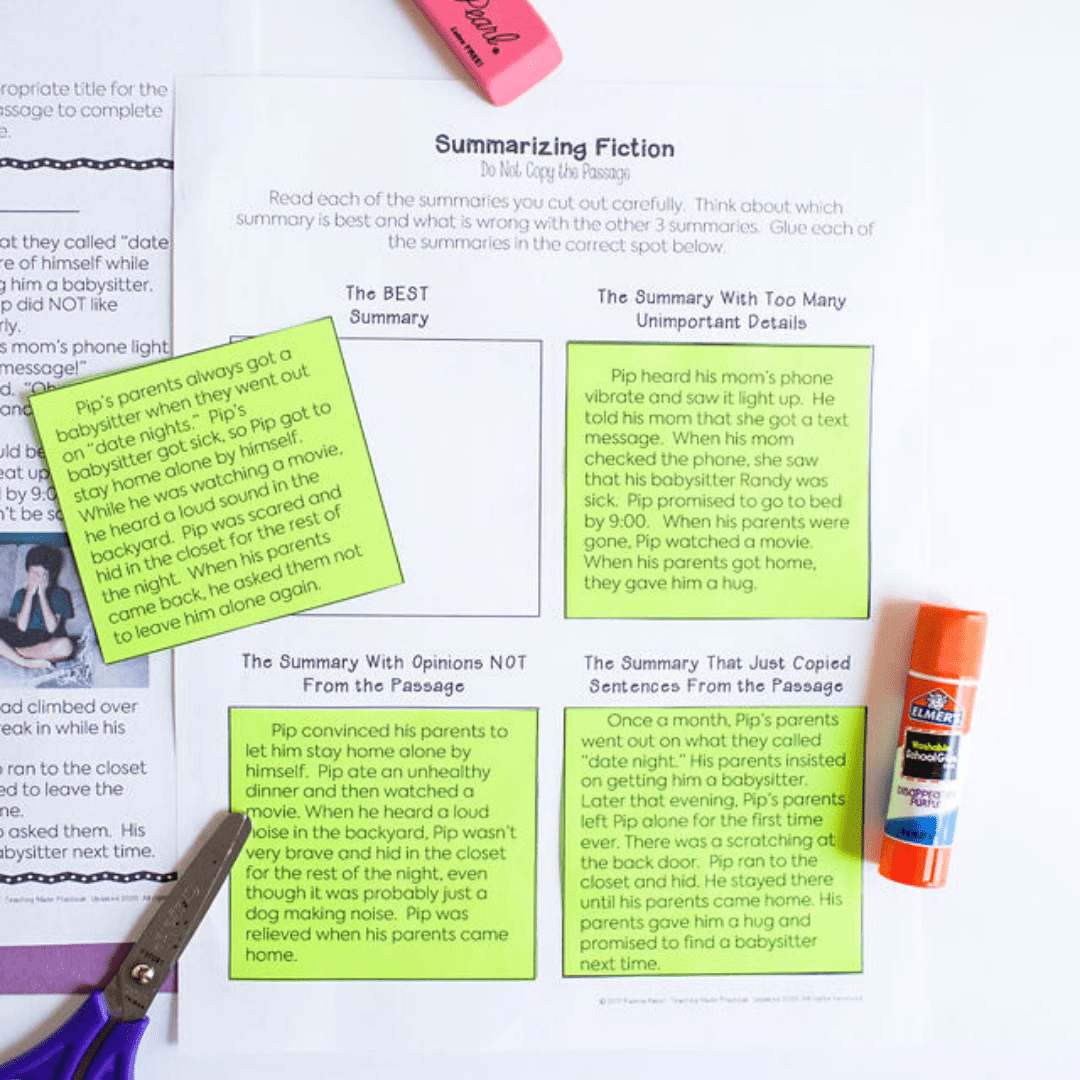
Teaching summarizing seems like it should be easy. When 3rd, 4th, and 5th grade students summarize, they don’t have to come up with any of their own ideas – all they have to do is briefly tell the most important parts of a book or reading passage that they read.
Sounds pretty easy...but it’s not.
Teachers have all sorts of cute and colorful ideas to teach summarizing strategies. If you search “summarizing” on Pinterest, you’ll see a huge variety of activities and ideas for summarizing fiction and nonfiction text.
There are anchor charts, graphic organizers, the “Somebody Wanted But So Then” method, the SAAC method, the 5 fingered retell, summarizing sentence starters, and more.
With all of these strategies, you would think our upper elementary students would be better at writing summaries. However, many of these strategies and techniques do not address the root of why students struggle with summarizing.
Why Students Struggle With Summarizing Fiction and Nonfiction Texts
Text to Text/Self/World Connections are NOT Included in a Good Summary
Usually, we want students to incorporate what they already know about a topic. We even take time in class to activate prior knowledge, knowing that students will better understand what they have read if they can relate to it. We want them to make meaningful connections to the text.
But when summarizing, students aren’t supposed to incorporate any additional information – only the information that the author chose to include.
Including and Justifying Your Own Opinion is NOT Included in a Good Summary
Usually, we encourage students to think for themselves. We want students to share their opinions, and to justify that opinion. We want students to learn how to disagree with an author and learn that authors aren't always right. We want students to ask meaningful questions.
But when summarizing, students aren’t supposed to have their own opinion – they are simply supposed to explain what the author says and thinks.
A Lot of Interesting Details Are NOT Included in a Good Summary
Usually, we want students to share as many details as possible. How many times have you told a student that they need to add more details, write more, or make it longer? The more details students include, the better – except for in summarizing.
But when summarizing, students are supposed to only include the most important information. Which means students have to have a firm handle on how to find the main idea. No wonder students struggle with summarizing text!
What Makes a Good Summary
There are a lot of different things that make up a good summary - some things that should be included in a summary, and some things that should not be included. I've found that 3rd, 4th, and 5th grade students struggle most with these aspects of summarizing fiction and informational texts:
- Summaries should only include information from the passage
- Summaries should not include your opinion
- Summaries should only include the most important information
- Summaries are not copied from the passage
Also, fiction summaries generally should include the problem and solution of a text.
Practicing each of these aspects of summarizing in isolation as mini lessons can help students become better summarizers. However, just telling upper elementary students what makes up a good summary is not enough.
How to Teach Summarizing - An Important Activity Idea
Since summarizing goes against what students will naturally want to do, we can’t just tell students what makes a good summary and expect that to be enough. Students don’t just need to see examples of good summaries - they also need to see examples of BAD summaries and be able to understand what makes it “bad.”
Before your summarizing lesson, write several different summaries of a reading passage. Make a couple of these summaries deliberately BAD – include a summary that has all sorts of unimportant information, and another summary that includes opinions that aren’t from the text. Make sure you also have one “good” summary.
After reading the passage with your class (or in a small group setting), show students the different summaries. Have the students discuss in small groups or partners which summary is best, and what is wrong with the other summaries. Repeat this activity several times with different reading passages.
Incorporating “bad summaries” into your summary lessons will keep your students from making those same mistakes when they begin writing summaries. Although writing out extra summaries takes extra prep time, it will keep you from having so many frustrated and confused students later in the school year.
A No Prep Option for Your Summarizing Lesson Plans
If you don’t have the extra time to prepare both “good” and “bad” summaries (and what teacher DOES have extra time?), then you might like a no prep option. I have summarizing resources for both fiction and nonfiction texts, or get both of them for a discount.
These resources provide reading passages with plenty of “bad” summaries and “good” summaries to help your students develop a better understanding of summary writing. The resources are also hands on, with several cut and paste activities and a scavenger hunt.
Or, you can find both the Summarizing Fiction and Summarizing Nonfiction resources at my TPT store.
Want Some Free, No Prep Main Idea Activities?







Comments 3
Awesome hands-on activity. Helps make this concept more concrete for students!
Thank you! I am a newer teacher and this was very insightful.
Thank you